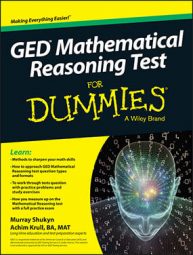You can save time on some questions in the Mathematical Reasoning test of the GED by working with approximate numbers instead of exact numbers. Two useful techniques for doing this are rounding and estimating.
Look at rounding first. If you arrive at a numerical answer with a recurring decimal, such as 210.8740921857362, you're not expected to enter all those decimal places. Look at the question to see whether it instructs you to round the answer to a specific decimal place, such as "round to the nearest hundredth" or "round to the second decimal place." Round up if the number in the next decimal place is 5 or more and round down if it's less than 5. For example, 6.235 rounded to the nearest hundredth is 6.24, but rounded to the nearest tenth, it's 6.2.
If no such guidance is provided, then use your common sense. If you're dealing with money, round up or down to the nearest hundredth (second decimal place) because the smallest coin is a penny — one hundredth of a dollar. If the problem deals with buying carpet by the square yard, round up to the next nearest whole yard because you're not going to round down and end up with less carpet than you need; otherwise, the carpet won't cover the entire portion of the floor you need to cover. For example, if you find out you need 6.2 square yards of carpet, round up to 7, not down to 6.
Now look at estimating. When performing calculations, you normally want to arrive at a precise answer, but if you're given four answers to choose from that are very far apart, calculating a ballpark figure will get you close enough to choose the correct answer. In such cases, you can save time by estimating.
For example, if carpeting sells for $2.68 a square yard and you need 20 square yards, you can round $2.68 up to $3.00 and then multiply $3.00 by 20 to get $60. Round down to $2.00 and then multiply by 20 to get $40. You now know that you're going to spend a little over $50 for that 20 square yards of carpeting. If the cashier charges you $70, you know right away a mistake has been made.
Using estimating, you can quickly rule out unreasonable answer choices and focus in on the most reasonable of the choices.

